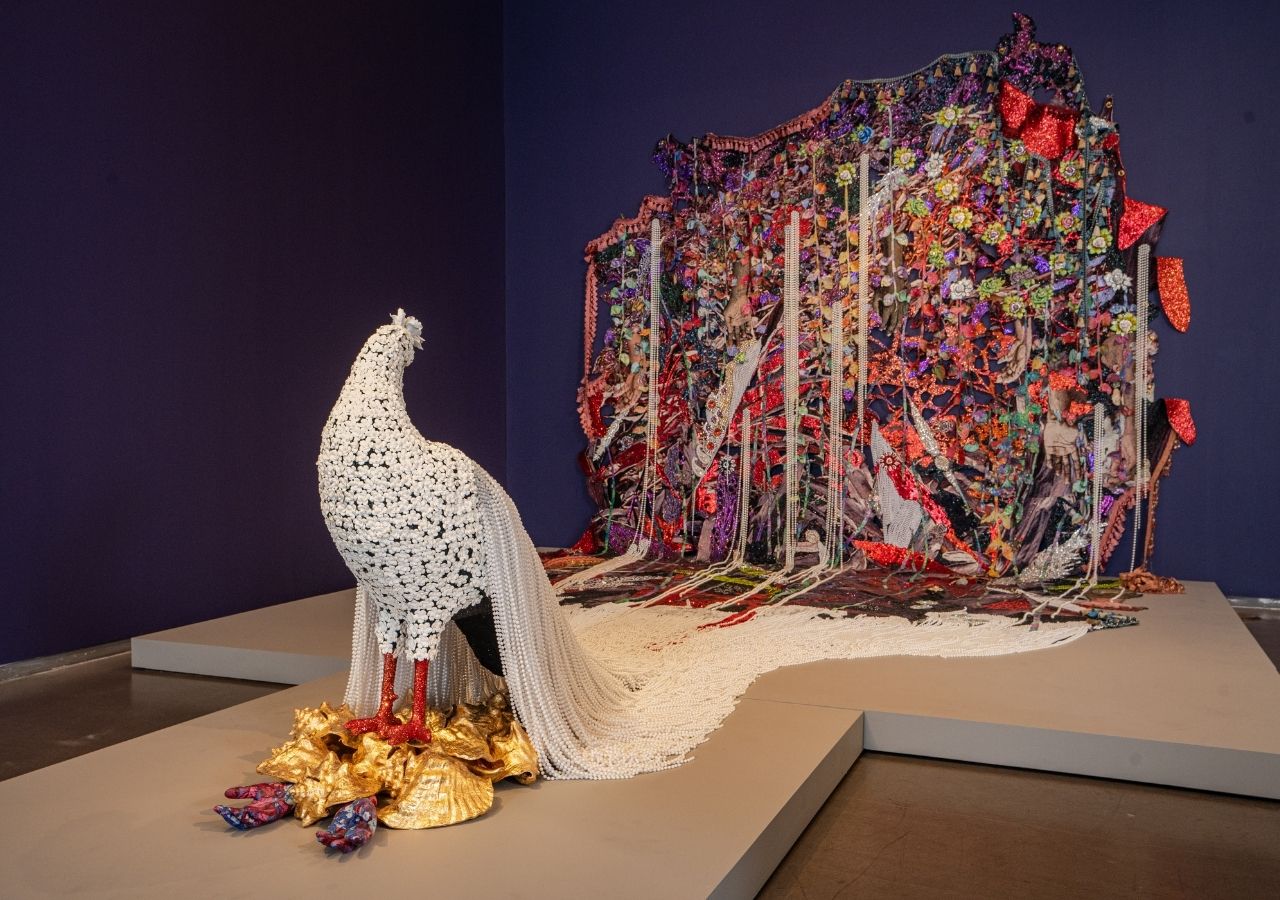Revival: Digging Into Yesterday, Planting Tomorrow

- Ebony G. Patterson, When the Land is in Plumage…, 2020, glitter, glue, beads, plaster, conch shells, gold leaf, porcelain, paint, trimmings, jewelry, embellishments, fabric, jacquard tapestry and paraffin wax.
About the Exhibition
Cincinnati, On View Through September 2025
“Thus early I learned that the point from which a thing is viewed is of utmost importance.” Frederick Douglass
An elegant figure in 19th-century dress is seen from behind, making his way through a grassy and wooded landscape, deep in thought, mysterious and powerfully compelling. The lyrical beauty of this introductory scene is punctuated and punctured by what follows when the camera pans across a quiet and disquieting view of a body. No overt explanation is offered or needed, as the film follows the protagonist onto a train and into domestic interiors, churches, lecture halls, and photographic studios where the life and lessons of the visionary activist and orator Frederick Douglass (1817-1895) unfold, seemingly in present time. Isaac Julien’s Lessons of the Hour is a poetic meditation on Douglass’s life, informed by some of the abolitionist’s most important speeches, such as “Lessons of the Hour,” “What to the Slave Is the 4th of July?” and “Lecture on Pictures.” Douglass was the most photographed man of the 19th century and believed in the power of art and technology to shape lives and society. The still image of Douglass, his wife Anna Murray Douglass, and the noted African American photographer J.P. Ball, Serenade, attests to the importance of the role of representation, in both politics and aesthetics, in shaping both Douglass’s groundbreaking work and Julien’s artistic vision. As writer Cora Gilroy-Ware observes, “The films of Isaac Julien know what beauty can do.”